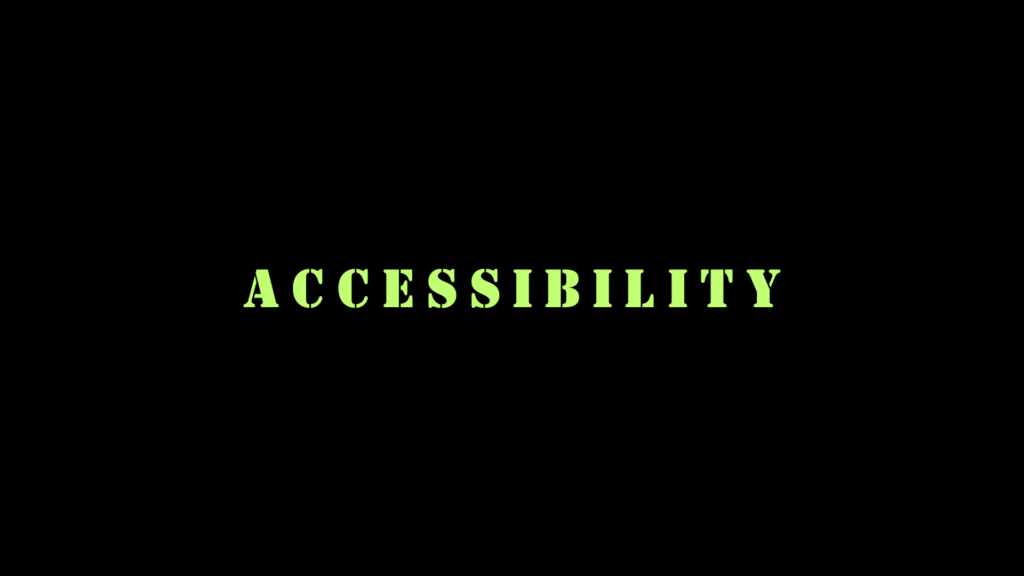Building for Everyone: A Guide to Accessible Web Design
In today’s digital age, inclusivity matters more than ever. Making your website accessible to people with disabilities isn’t just good ethics—it’s good business. Around 15% of the world’s population experience some form of disability, and ensuring your website is accessible not only enhances user experience but also broadens your reach. Here’s how you can make your site accessible for people with disabilities.
1. Use Descriptive Alt Text for Images
Visually impaired users often rely on screen readers to browse websites. To accommodate them, every image on your website should include alt text—a brief description of what the image represents. This not only makes your website accessible but also improves SEO.
- Good Practice: Write clear and concise alt text for all images. Avoid phrases like “image of” and focus on describing the key content or purpose of the image.
2. Ensure Text Is Readable and Scalable
Text on your website should be easily readable for everyone, including people with visual impairments.
- Font Size and Style: Use at least 16px font size for body text and choose legible fonts like Arial, Helvetica, or Verdana. Avoid decorative fonts that may be hard to read.
- Scalable Text: Ensure that users can zoom in up to 200% without losing content or functionality.
3. Provide Keyboard Navigation Options
Not all users can interact with your website using a mouse. Some rely solely on a keyboard or assistive technologies. Make sure your website is fully navigable using the keyboard.
- Focus Indicators: Use visual focus indicators so users can easily identify where they are on the page. For example, when a user presses the “Tab” key, a focus outline should appear around the currently selected link or button.
- Logical Order: Ensure that keyboard navigation follows a logical order, so users can intuitively navigate between different parts of the website.
4. Use Color and Contrast Wisely
For users with visual impairments, including color blindness, the use of color and contrast is crucial. A website that lacks proper contrast can be challenging for many to read.
- Contrast Ratio: Make sure there is a minimum contrast ratio of 4.5:1 between text and background. Use tools like WebAIM’s contrast checker to ensure your colors meet accessibility standards.
- Don’t Rely Solely on Color: Use additional cues like underlines for links or icons for errors and success messages to differentiate important elements rather than relying on color alone.
5. Create Accessible Forms
Forms are a critical part of many websites, from contact forms to sign-up sheets. Ensure they are accessible to all users.
- Label Your Fields: Every form field should have a clear, descriptive label. Use the
<label>tag in HTML to associate labels with form fields. - Error Messages: Make sure your form error messages are easy to understand. Use text that clearly describes what went wrong and how to fix it.
6. Add Transcripts and Captions for Multimedia
Multimedia content, such as videos and audio clips, should be accessible to people with hearing impairments.
- Captions: Provide captions for all video content. Captions should be synchronized with the video and easy to read.
- Transcripts: Provide written transcripts for audio content. This is essential for people who are deaf or hard of hearing and also helps in SEO ranking.
7. Make Links Descriptive
Links should be clear and descriptive, so users can understand their purpose even when read out of context by screen readers.
- Avoid Generic Phrases: Avoid link text like “click here” or “read more.” Instead, use descriptive phrases such as “download the report” or “learn more about accessibility.”
8. Test with Accessibility Tools
Once you’ve implemented these changes, it’s essential to test your website using accessibility tools. There are several free and paid options available.
- Accessibility Checkers: Tools like WAVE, Axe, and Lighthouse can scan your website for accessibility issues and offer suggestions on how to fix them.
- User Testing: Ideally, you should test your website with real users who have disabilities to get a clear understanding of how your website performs in practice.
9. Follow WCAG Guidelines
The Web Content Accessibility Guidelines (WCAG) provide a comprehensive set of standards to ensure websites are accessible. Aim for compliance with WCAG 2.1 Level AA, which is widely accepted as the standard for accessibility.
The four key principles of WCAG are:
- Perceivable: Users must be able to perceive the information presented.
- Operable: Users must be able to navigate and interact with the website.
- Understandable: Content should be clear and easy to comprehend.
- Robust: The website should work across different devices, browsers, and assistive technologies.
Conclusion
Making your website accessible to people with disabilities is not just a legal or ethical obligation but also a way to provide a better experience for all users. By following best practices, such as adding alt text, improving keyboard navigation, and testing your site’s accessibility, you can create a more inclusive web. It’s time to design for everyone, because accessibility benefits everyone.
